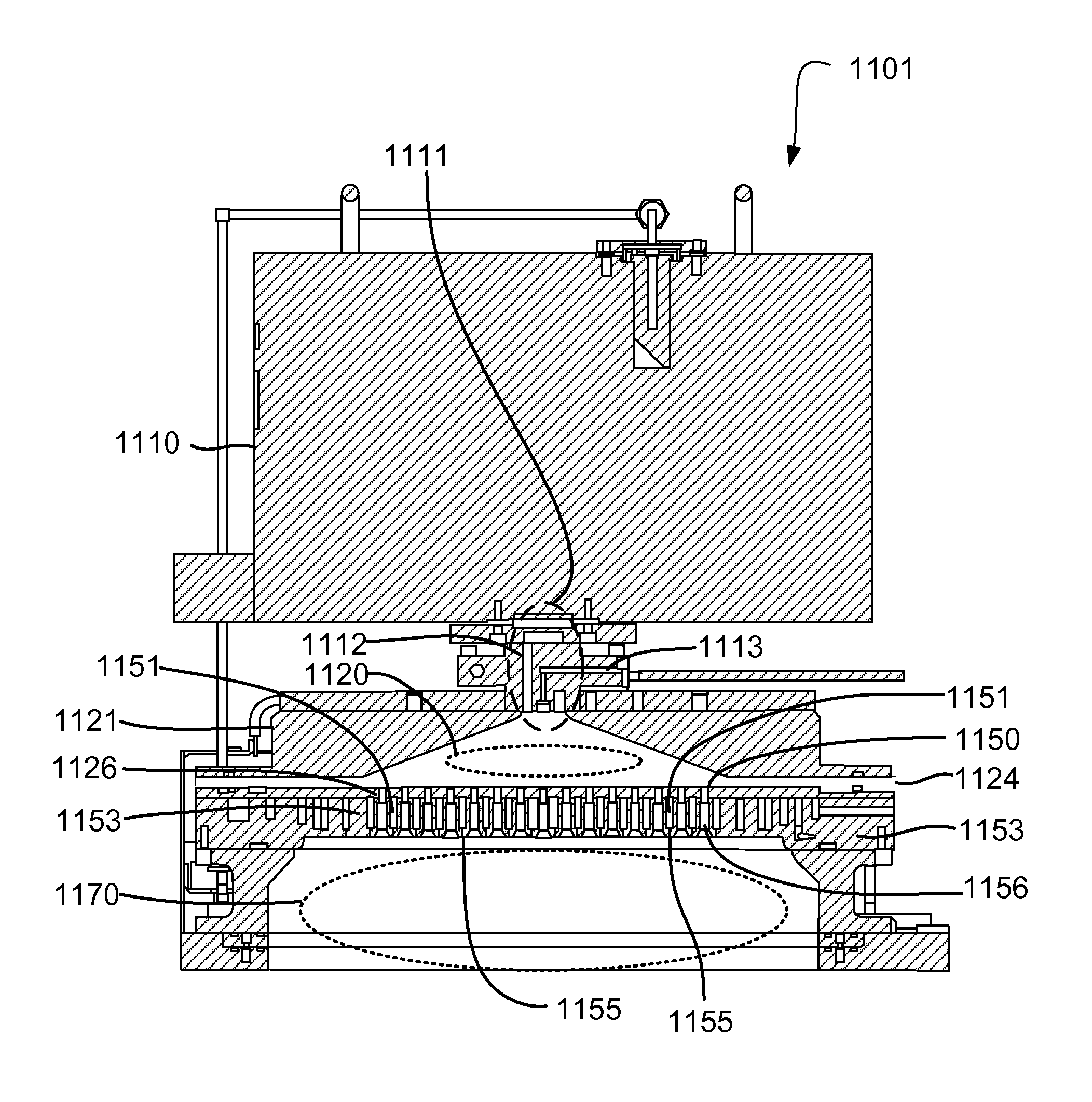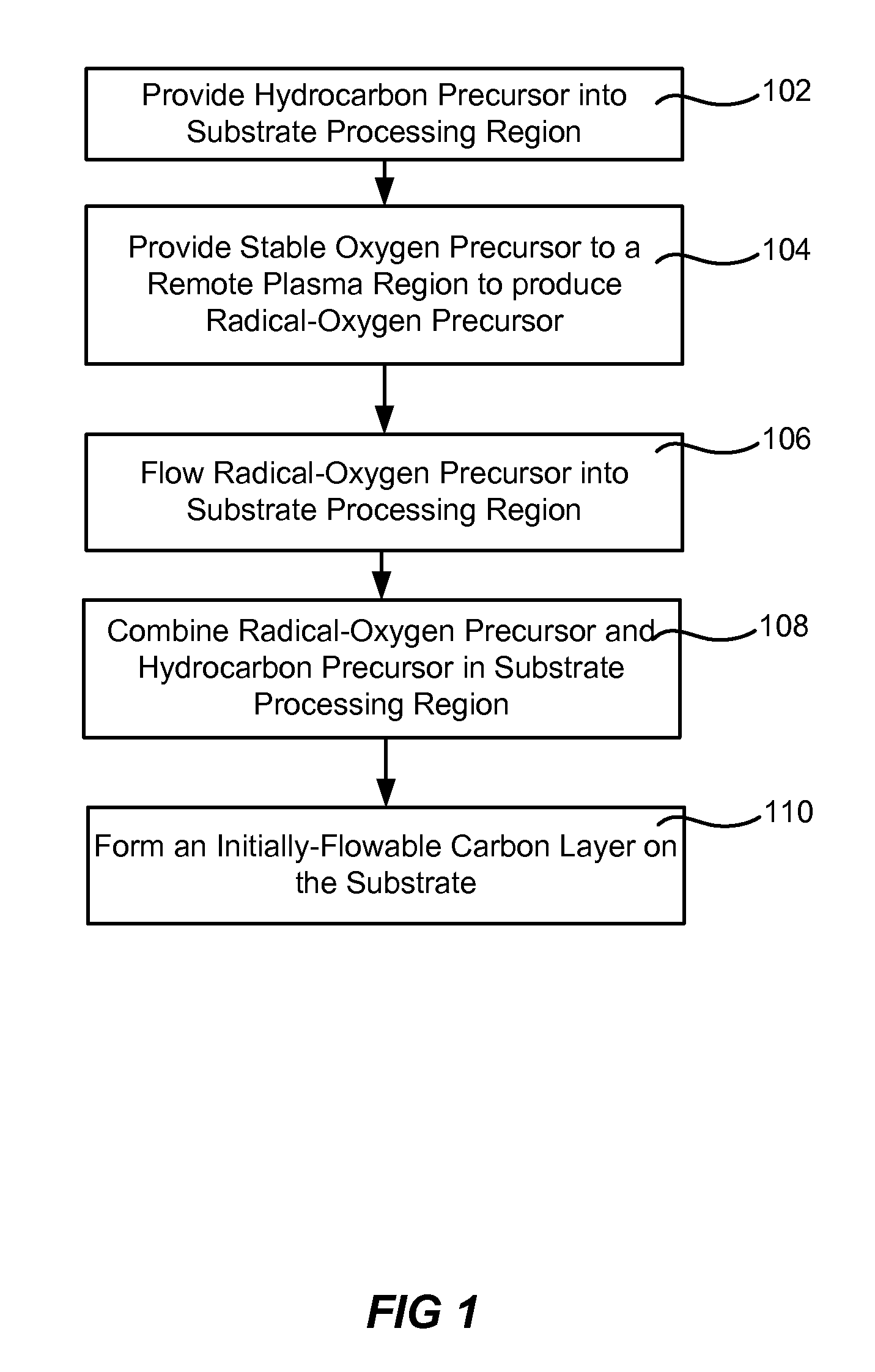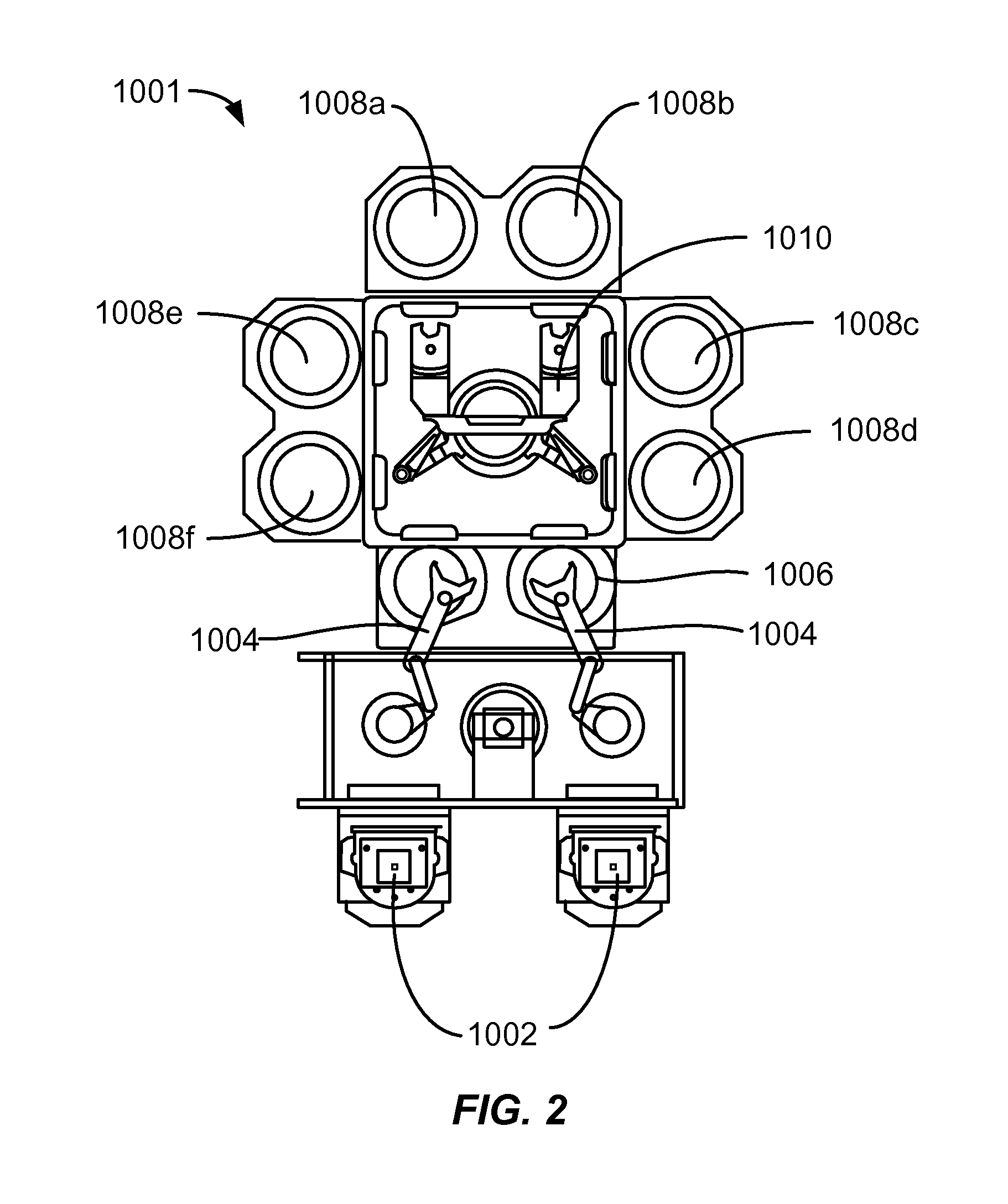Flowable carbon for semiconductor processing
a technology of flowable carbon and semiconductors, applied in the direction of semiconductor/solid-state device testing/measurement, chemical vapor deposition coating, coating, etc., can solve the problem of difficult to fill gaps without dielectric materials, new challenges arise, and conventional chemical vapor deposition techniques often experience an overgrowth of materials
- Summary
- Abstract
- Description
- Claims
- Application Information
AI Technical Summary
Benefits of technology
Problems solved by technology
Method used
Image
Examples
Embodiment Construction
[0015]Methods are described for forming flowable carbon layers on a semiconductor substrate. A local excitation (such as a hot filament in hot wire CVD, a plasma in PECVD or UV light) may be applied as described herein to a silicon-free carbon-containing precursor containing a hydrocarbon to form a flowable carbon-containing film on a substrate. A remote excitation method has also been found to produce flowable carbon-containing films by exciting a stable precursor to produce a radical precursor which is then combined with unexcited silicon-free carbon-containing precursors in the substrate processing region.
[0016]In the case of a local excitation, a hot filament may be used to excite the silicon-free carbon-containing precursor in a deposition technique referred to as hot-wire chemical vapor deposition (HW-CVD). UV light or a local plasma may also be used to excite the silicon-free carbon-containing precursor. The inventors have determined that these techniques can be modified to f...
PUM
| Property | Measurement | Unit |
|---|---|---|
| temperature | aaaaa | aaaaa |
| temperature | aaaaa | aaaaa |
| plasma power | aaaaa | aaaaa |
Abstract
Description
Claims
Application Information
 Login to View More
Login to View More - R&D
- Intellectual Property
- Life Sciences
- Materials
- Tech Scout
- Unparalleled Data Quality
- Higher Quality Content
- 60% Fewer Hallucinations
Browse by: Latest US Patents, China's latest patents, Technical Efficacy Thesaurus, Application Domain, Technology Topic, Popular Technical Reports.
© 2025 PatSnap. All rights reserved.Legal|Privacy policy|Modern Slavery Act Transparency Statement|Sitemap|About US| Contact US: help@patsnap.com



